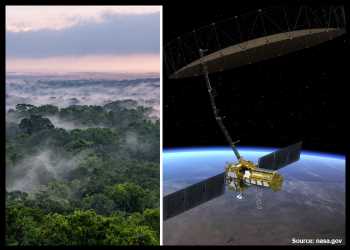US-India Mission To Send Radar To Study Changes In Ecosystems
A U.S.-India joint mission will help researchers explore how changes in Earth’s forest and wetland ecosystems are affecting the global carbon cycle and influencing climate change.
NASA said that in collaboration with ISRO (Indian Space Research Organisation), it will launch the NISAR (NASA-ISRO Synthetic Aperture Radar) radar satellite mission early next year.
The mission will offer detailed insights into two types of ecosystems – forests and wetlands – vital to naturally regulating the greenhouses gases in the atmosphere that are driving global climate change.
When in orbit, the NISAR sophisticated radar systems will scan nearly all of Earth’s land and ice surfaces twice every 12 days. The data it collects will help researchers understand two key functions of both ecosystem types: the capture and the release of carbon.
Forests hold carbon in the wood of their trees; wetlands store it in their layers of organic soil. Disruption of either system can accelerate the release of carbon dioxide and methane into the atmosphere. Tracking these land-cover changes on a global scale will help researchers study the impacts on the carbon cycle.
“The radar technology on NISAR will allow us to get a sweeping perspective of the planet in space and time,” said Paul Rosen, the NISAR project scientist at NASA’s Jet Propulsion Laboratory in Southern California. “It can give us a really reliable view of exactly how Earth’s land and ice are changing.”
It is estimated that forestry and other land-use changes account for more than 10 percent of net human-caused greenhouse gas emissions. NISAR’s data will improve the understanding of how the loss of forests around the world influences the carbon cycle and contributes to global warming.
Source: Read Full Article


